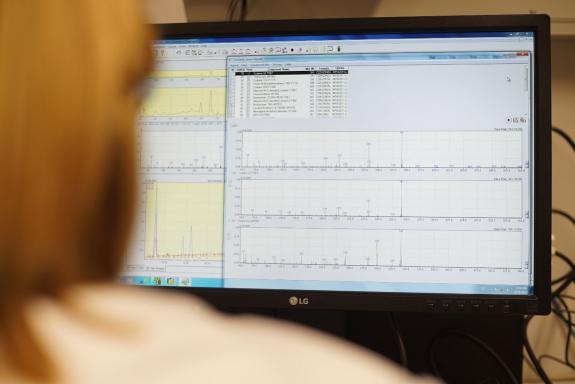The detection of a wide range of active substances and toxins in biological sample materials such as body fluids and tissues is one of the main tasks in forensic and clinical toxicology. It is important for a wide variety of questions, ranging from drug-induced impairment of driving safety to the clarification of symptoms in unclear emergencies in the clinic to the confirmation or exclusion of poisoning in the context of determining the cause of death.
The analytical approach used here is known as systematic toxicological analysis (STA). The aim of this is to detect all foreign substances of toxicological significance contained in samples from suspects, patients or deceased persons, to prove them beyond doubt and, if necessary, to determine their concentrations. For this purpose, suitable sample materials (e.g. urine, blood) must first be selected and the relevant substances extracted/isolated from the sample matrix during sample preparation and, if necessary, enriched. As the samples prepared in this way usually still represent complex mixtures of various chemical compounds, these must be further separated in order to finally be able to detect individual substances beyond doubt.
So-called chromatographic methods have proven themselves for separation, in which the substances contained in the sample are transported through a so-called separation column with a gas stream (gas chromatography) or a liquid stream (liquid chromatography). They interact to varying degrees with the separation material in the separation column. As a result, they are flushed from the separation column with the gas or liquid stream at different times and can therefore be detected separately.
Mass spectrometric techniques have proven themselves in STA for detection. Here, so-called mass spectra are recorded from the molecules to be detected, which - similar to a human fingerprint - are characteristic of the respective compound. By comparing the mass spectra recorded during the analysis with reference spectra from a mass spectra library, the drugs/medicinal substances or toxins contained in the sample can then be identified and thus detected beyond doubt.
During the event, the basic principles of sample selection and preparation, chromatographic separation and mass spectrometry-based substance detection will be explained in a lecture. In addition, interested parties will have the opportunity to carry out their own software-supported evaluations of analysis runs of selected forensic and clinical sample cases at the hands-on stations. We are always available for practical assistance and explanations as well as discussions of the results.
Further information can be found on the homepage of the Institute of Forensic Medicineat the UKJ.

No future events in this series.
